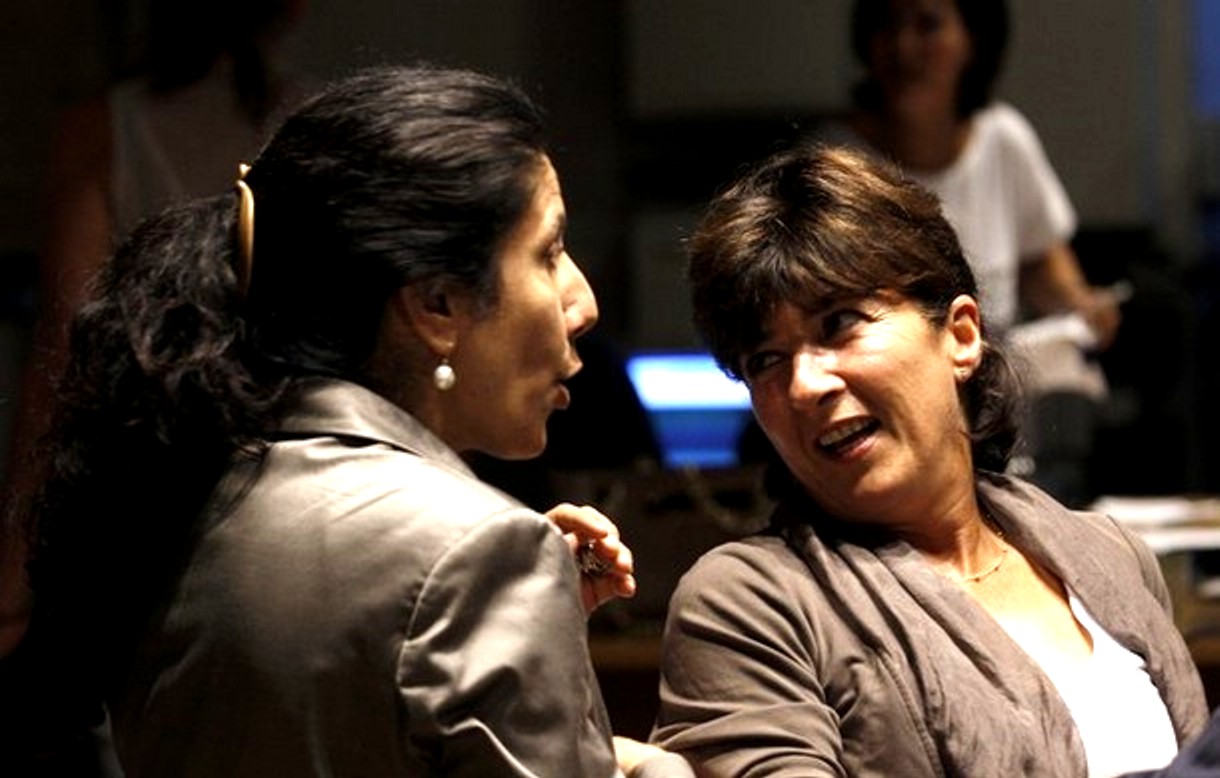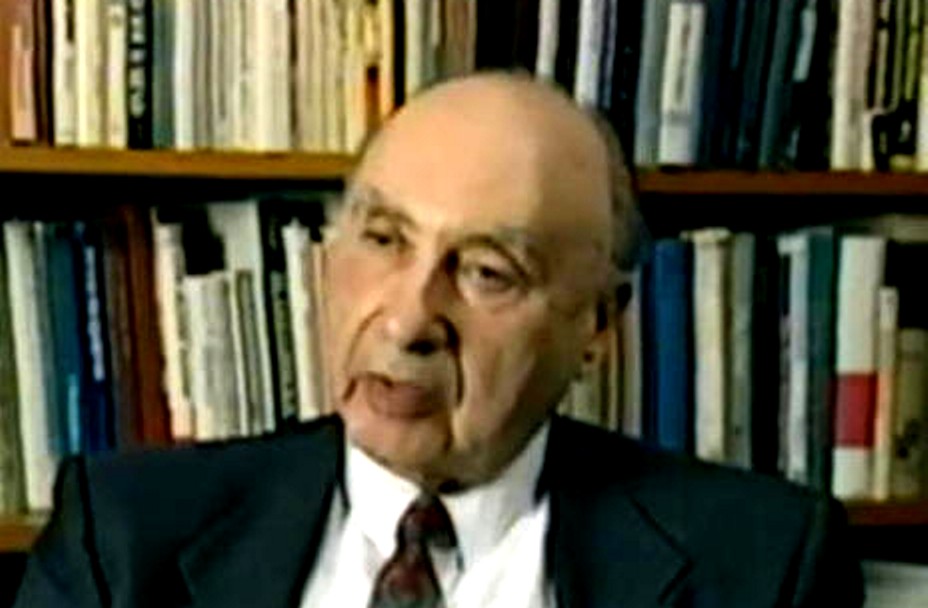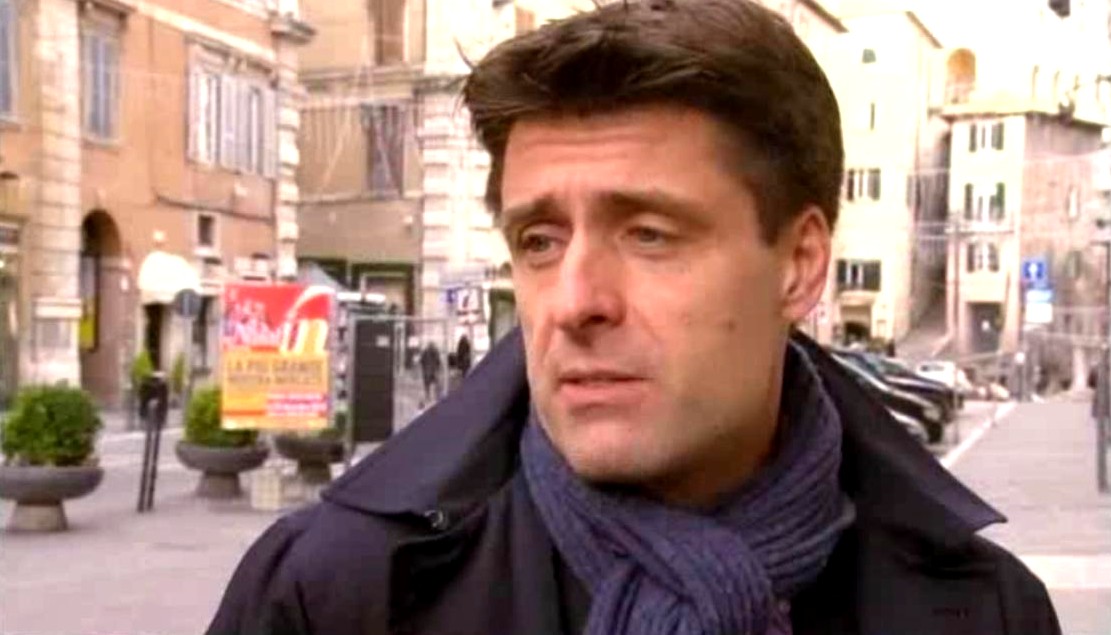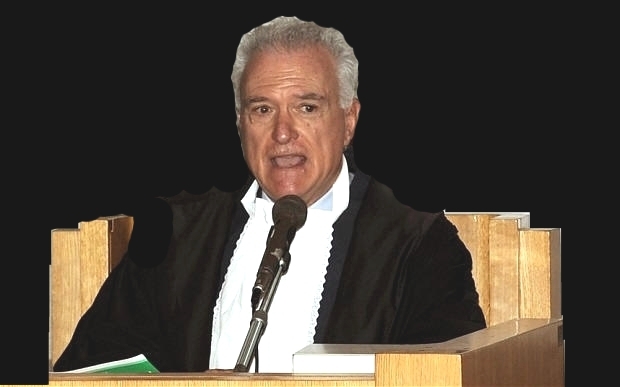
Headsup: To those many lawyers amazed that Knox did not get on the witness stand to head off a certain re-conviction: the best guess among Italian lawyers is that Knox's own lawyers feared ANOTHER calunnia charge if she repeated the crackpot and highly disprovable claims that she was tortured. The tough calunnia law is primarily a pushback measure against mafia meddling which is widely suspected in this case.
Thursday, September 22, 2011
Reflecting On Andrea Vogt’s Fine Report “Knox: Innocent Abroad Or “˜Getting Away With Murder’?”
Posted by Skeptical Bystander

Cross posted from my personal blog. Please click the image above for Ms Vogt’s new piece.
In this intelligent and well-written piece, Andrea Vogt wonders aloud how Italians would react to an acquittal of the Seattle woman who was convicted in December 2009 of taking part in the killing of her roommate, Meredith Kercher. She notes that an acquittal would be cause for celebration in Seattle.
It would certainly be cause for celebration among those who have taken up the cause and believe in Knox’s innocence despite the compelling evidence of her involvement in this horrific crime. But the fact is, most people in Seattle are simply not that interested. And among those who are, the consensus is certainly not that an innocent abroad got railroaded.
If it seems so, it’s because the local media has dutifully followed the lead of the national media and adopted the “innocent abroad” narrative concocted by David Marriott, whose PR firm was hired to manage Knox’s image shortly after she was arrested. In Seattle, Meredith’s murder has been played as a human interest story in which only the local protagonists matter. Meredith was British; it is assumed that Seattleites could not possibly give a toss about her.
Hence, local coverage has favored news of fundraisers for the accused local woman and then for the convicted local woman. Questions from local journalists to her supporters (family) have ranged from “How is she holding up in prison?” to “How is she holding up in prison?” And since there is no guilter movement, local or otherwise, except in the minds of a few shrill locals, there has been no local coverage of the movement’s “activities”. How can a non-existent movement have activities?
I have met many people in West Seattle who quietly shake their heads in disbelief at Steve Shay’s coverage for the West Seattle Herald. Yesterday, someone who works at a local business said “you’re skeptical bystander” when she handed me back my credit card. She told me she was a long-time lurker who reads perugiamurderfile.org and TJMK every day for information about the case. There are many people like her in Seattle.
I found it amusing, though sad, to read the comments that follow Andrea Vogt’s thoughtful piece for the First Post. Naturally, loud vocal supporter “Mary H” (this is her online pseudonym, and hiding behind it may be one reason she is so loud on the internet) was quick to condemn Vogt for merely pointing out the obvious. Mary H (fake name) asked Andrea Vogt (real name) how she could sleep at night!
It ain’t that hard, Mary, when you have the courage of your convictions and when you stand by the facts rather than getting sidetracked by the cause.
The fact at hand is that many people—in Seattle, in Italy, and elsewhere—would come away from an eventual acquittal with the feeling that justice had not been done for Meredith Kercher and her family and that at least two of those responsible for her death had gotten away with it. Mary H and others may not like to hear this, but it is a fact. And no amount of shaming on the part of Mary H or anyone else is going to make a bit of difference.
Yesterday, a lawyer friend and I were musing about what would have happened had this case been tried in the US. Many Knox supporters have said, repeatedly, that it would never have gone to trial here. My lawyer friend agreed, but for a different reason than the one implicit in this view (i.e. that there is supposedly no evidence). He said
I don’t think the case would have gone to trial in the US. First, they would not have had to stop questioning her when they did. They would have artfully gotten her to waive her Miranda rights. They would have told her they can’t help her unless tells her side of the story, been very sympathetic initially and built up her confidence that she could talk her way out of it. They would eventually hone in on the inconsistencies, and when she finally cracked there wouldn’t be a lawyer there to stop her. The death penalty would have been on the table, and her only sure way to avoid that would be to plead guilty in exchange for life.
He also thinks that this would not have been such a high-profile case had it happened in Seattle.
Let’s wait and see how this court weighs the two contested items in the overall scheme of things. As a poster on PMF (another lawyer) wrote last night, it all boils down to this: How many pieces of evidence… ‘consistent with, but not conclusive of’ guilt can stack up against someone before, as a matter of common sense, it is no longer reasonable to believe they are innocent?
Monday, September 19, 2011
Several Cautious Overviews Of The Possibilities In The Final Sessions Of The Appeal
Posted by Peter Quennell
[Above: the central London area of Southwark where Meredith was born]
We note that Andrea Vogt is reporting on the prospects from Coulsdon in south London where Meredith grew up and went to school.
Hellman and his lateral judge, Massimo Zanetti, will guide a jury of six civilians toward a decision. If there is disagreement, the matter could go to a secret vote. Each juror has one vote, Zanetti has one vote and Hellman has two.
The jury members have free reign to fashion their decision as they please. They could acquit, convict or also choose to convict on lesser charges, reducing sentences, or even opt to release Knox from prison but order house arrest with electronic monitoring in Italy as the case moves on to the final phase in Court of Cassation.
If there is a full acquittal, Knox would go from court to Capanne penitentiary and after two hours of signing papers, walk out of prison a free woman.
“It is common for Italian courts of appeal to review sentences, and I would not be surprised if the two defendants in fact receive a more lenient sentence, also given the final outcome of Guede’s trial,” said Stefano Maffei, who teaches criminal procedure at the University of Parma.
But it ain’t over untill it’s over, though, given Italy’s automatic two levels of appeal where the prosecution too can advance grounds. The Supreme Court Of Cassation will hear the final appeal next year. As Tom Kington notes in the Guardian.
Mignini claims he is “satisfied” with the disputed forensic work, finds the triumphalism of the Knox camp “questionable”, and also has a new legal argument up his sleeve.
“The legal code states that any review of evidence must be requested immediately, not two years later.”
If the couple are acquitted, he added, the verdict could yet be annulled if Italy’s high court decides the recent DNA review was illegal.
Judge Hellman of course refused a prosecution request for a re-test of the DNA material which Judge Hellman’s consultants had failed to do. That could be appealable too.
Mr Mignini also believes that the Supreme Court made a mistake in disallowing Knox’s first written statement implicating Patrick Lumumba and placing herself firmly at the scene with facts no-one who wasn’t there could have known.
His reasoning is that Knox ASKED to write out this statement. Mr Mignini merely observed while she went ahead and he asked her no questions, and so she did not need to have a lawyer present for that.
So far the Supreme Court has been firmly on the prosecution’s side except for the above, and the court specifically noted a taped conversation in Capanne Prison where Knox appeared on the verge of a confession (one of several times where she seems to have come close).
Her parents interrupted her, apparently, the court thought, to stop her dropping herself even further in the soup. Seeming proof that her parents have all along known of her guilt is suggested also by their not passing on that Knox said to them that Patrick had been framed.
And suggested also by this hot potato of a post by Finn MacCool.
Wednesday, September 14, 2011
A New Book Explains The Unfruitful Emergence Of More And More Conspiracy Theories
Posted by Peter Quennell
Conspiracy theorists have dismally failed to come up with a plausible alternative theory of how Meredith died.
However, they do keep trying. So do the proponents of literally hundreds of other conspiracy theories, constituting vast amounts of effort probably better spent elsewhere - conspiracy theorists very rarely achieve very much, or do well economically, or rise to the top jobs.
The articles here and here look with skepticism on the 9/11 conspiracy theories which on the tenth anniversary of the twin towers coming down have been pushed hard by the various factions.
Now a new book “The Believing Brain” explains the mental makeup that disposes people to so eagerly believe the worst of our fellow man or our governments: One review in the Wall Street Journal..
In Mr. Shermer’s view, the brain is a belief engine, predisposed to see patterns where none exist and to attribute them to knowing agents rather than to chance””the better to make sense of the world. Then, having formed a belief, each of us tends to seek out evidence that confirms it, thus reinforcing the belief.
This is why, on the foundation of some tiny flaw in the evidence””the supposed lack of roof holes to admit poison-gas cans in one of the Auschwitz-Birkenau gas chambers for Holocaust deniers, the expectant faces on the grassy knoll for JFK plotters, the melting point of steel for 9/11 truthers””we go on to build a great edifice of mistaken conviction….
Mr. Shermer offers a handy guide for those who are confused. Conspiracy theories are usually bunk when they are too complex, require too many people to be involved, ratchet up from small events to grand effects, assign portentous meanings to innocuous events, express strong suspicion of either governments or companies, attribute too much power to individuals or generate no further evidence as time goes by.
The increasingly shrill posts appearing daily on the website Ground Report seem to mark pretty high against that list. Could the Evil Mignini have engineered even this?
Oops. Another conspiracy theory in play.
Monday, September 12, 2011
As We Long Predicted Knox Will Not Face Cross Examination When It Really Matters
Posted by Peter Quennell
Majority opinion in Perugia has long inclined to the view that the right perps were convicted back in December 2009.
It is very hard to see the six jury members (the lay judges) bucking that trend without being given a great deal more red meat for them to convince their friends and neighbors (and for that matter most of Italy) than they have now.
And Judge Hellman has a reputation similar to Judge Massei’s for making sure all the bases are covered and for not arriving at trial or appeal outcomes based on a few outlying contradictory “facts” or a mere whim. He too has been given very little that is new.
Putting Knox and Sollecito on the stand now would seem the last best shot at taking care of that.
But there is no sign that either defense team has been eager to see their clients speak out at any time, and Knox was even publicly warned early on not to do so.
The teams quite possibly winced now and then (along with many others) at Knox’s performances in past spontaneous declarations and in her stint on the stand in July 2009 which did not really go over at all well.
Kermit in this December 2010 post explained the risks Knox would face on the stand. Kermit helpfully included 150 cross-examination questions to drive home the stark point.
So. Knox and Sollecito. Trapped by poor legal and PR strategy between the devil and the deep blue sea.
Saturday, September 10, 2011
Conspicuous By Their Absence Now: Legal Commentators For Sollecito And Knox
Posted by Peter Quennell
There is a marked sharp contrast now between how various reporters without legal backgrounds and various real lawyers are seeing the state of play in the appeal.
The post below shows how flavor-of-the-month reporters like Nick Pisa are still reporting happy talk from Knox and her entourage, while, within their professional constraints, we see more and more lawyers realisng Sollecito and Knox really are cooked.
Half a dozen of the main posters on TJMK who are lawyers (they identify themselves as such when they post) have explained how tough is the real case. Various Italian lawyers continue to offer us insights and tips from Perugia and Rome. And we continue to see maybe half a dozen lawyers a week getting in touch by email or signing up, a trend that shows no sign of fading out.
In contrast all of the lawyers and legal commentators who were once suggesting the process in Perugia had taken a wrong turn have gone quiet, and no new legal voices for Solllecito and Knox are speaking up. The CNN legal shows devote almost no air time to the appeal, and Geraldo Rivera, Dan Abrams, John Q Kelly, Lis Wiehl and others have wound down their commentaries to brief equivocations or nothing at all.
Ted Simon who is believed to be still on the Mellas-Knox payroll seems be operating only from very deep cover. Knox’s own lawyers pass on the (to us sad) happy talk from Capanne while themselves sounding very cautious and down.
And the former lawyer and political commentator Ann Coulter who does us the peculiar favor of including us in her definition of right wing is starkly declaring that the increasingly small number of increasingly shrill non-lawyers for Sollecito and Knox really should get a life.
By now, the only people who believe Knox and Sollecito are the usual criminal apologists and their friends in the American media.
Serial smearer and evidence incompetent Steve Moore as one of the usual criminal apologists?! That has to hurt.
Thursday, September 08, 2011
Fourteenth Appeal Session: Judge Hellmann Consults Jury And Concludes They Have Enough To Wrap Up
Posted by Peter Quennell
Judge Hellman took the jury into chambers for half an hour yesterday and they decided not to delay matters for a further DNA review.
Final arguments will therefore take place later this month (dates in our right column) and a verdict on the appeal could be announced by the end of the month.
Defenses didn’t ask yesterday to put their clients on the stand, no further impromptu remarks from the defendants were made, and no defense request for review of the very damning mixed blood traces was advanced.
Our Italian lawyers are not rating chances of a full acquittal above one or two percent. They believe the groundwork for that has simply not been laid. The judges and jury dont have what is needed to upend the detailed outcomes of two trials and two other appeals. And the Italian system is nothing if not very cautious and lacking in surprise.
The Supreme Court has accepted that THREE attackers had to have been present on the night. Not the slightest evidence of any perps other than the three put on trial has been advanced. No scenario has been offered in court for Guede having committed the crime on Meredith alone - in fact Guede accused the other two of being there right to their faces in court.
Free-lance reporter Nick Pisa (image above) who we often quote on the occasions when we think he’s got it right reported yesterday in the Daily Mail that Prosecutor Comodi expressed frustration with the judge and predicted an acquittal due to bias.
This is not confirmed by any Italian source and Ms Comodi is simply reported there as saying she had expected the request for further tests to be turned down and the defendants COULD still walk. Nothing more.
TJMK main poster Will Savive offered this explanation for Nick Pisa’s apparent serious mistake in a comment on our previous post.
ABC News is also reporting that they spoke to Comodi after the session and it is a big difference than what Pisa wrote.
In fact, it is ABC who has claimed that they interviewed her. According to ABC, Comodi informed them that there is “a possibility” that Knox and Sollecito could win the appeal. There is also a possibility that the sun will fall from the sky, so it is all in the context and translation of how she said it. Then ABC quoted her as saying, “I would find it very serious if they were set free.”
FOX News also reported Comodi speaking out. Sheppard Smith put Comodi’s alleged quote on the screen and it read word for word what Pisa wrote. FOX has been decent, in my opinion, thus far on reporting on the case, but Sheppard and his two cronies today were amateur at best and clearly not educated on the case.
It is very likely that Pisa twisted her quote to fit his agenda and make news; I wouldn’t be surprised!
HOWEVER”¦
The Seattle Times has the best piece on it I think. In their article they write the interview as going like this:
COMODI: We did our job. I am convinced by what I have said. I am fully convinced of their guilt and I would find it very serious if they were set free. Today’s decision could lead one to think that there is more of a possibility that they be set freed.
So in essence, she never said that there is a possibility, in her opinion. She said that the hearing today “could lead one to think that there is more of a possibility that they be set freed.” It seems as though only Pisa is reporting it the way he did.
The Seattle Times included this: “Knox’s lawyer Luciano Ghirga warned that the court’s rejection of new DNA testing was not equal to a positive outcome of the whole appeals trial.”
As discussed at length on PMF (link just below) the present Knox PR hype is very reminiscent of the hype just before Judge Massei’s blunt and unequivocal verdict was read out.
Wednesday, September 07, 2011
Thirteenth Appeal Session: It Looks Like The Defenses Have A Real Friend in Court - Judge Hellman
Posted by Peter Quennell
1. Context Of Overt Hellman Bias
Do you recall this fraught post?
“Corruption Of Appeal: Angry Top Criminal Judge Chiari Is Blatantly Forced Aside”
Umbria’s highly qualified top criminal judge had been yanked from the case by Umbria’s Chief Judge (and avid mason) De Nunzio, who has seemingly been gotten-to by the Sollecito family or their defense team.
Conjectures in Perugia abound. Maybe money was involved, or mafia ties, or masonic ties.
In the period since the prosecution seems to be winning every shot at the hard facts. And yet Hellman intermittently seems to show major bias in his pro-defense rulings.
Hellman’s opening remarks back in 2010 favored the defense. So did his defined scope of the appeal, which has been illegally expanded into a mini-trial.
Contrary to appeal law, Hellman has accepted a total of FIVE new defense witnesses! None of whom relate closely to trial substance.
Two clearly biased and competent “independent” DNA experts were appointed to review some of the DNA. But why? The Carabinieri labs are meant for this purpose.
And whereas the defenses have been granted everything they ever wanted, time and again Judge Hellman has ruled against the prosecution.
And it happened again today.
Astoundingly, Hellman ruled that a confession on 27 July under oath by Luciano Aviello in front of Prosecutor Comodi making serious accusations against the Sollecito family and their defense team was not accepted for court follow-up!
Roll on Supreme Court. That is where Umbria Prosecutor General Galati recently transferred from and he has told the prosecution they will prevail for sure at that level.
2. Today In Abbreviated Court Session
There is a strike in Perugia so court could only meet for a half of a day. The Italian reporting today conveys a picture of more of the same tough prosecution rebuttal that we were seeing yesterday.
It emerged that the DNA that was remaining on both the bra clasp AND the knife might have been re-tested if Carla Vecchioti and Stefano Conti had not come up with some contentious quibbles for not proceeding.
The prosecution may now call for those tests to actually be done, by a new set of independent experts. Let us see if Judge Hellman will allow them.
Amanda Knox looked increasingly down today as she absorbed the trend in the testimony, and at one point she slumped on the table seemingly asleep. Serial over-promising by her suffocating entourage hasn’t done her any good.
Mr Mignini believes that at several points Amanda Knox wanted to confess and to pay her dues. Surely better this than a Casey Anthony or OJ Simpson situation with their attendant huge overtones of illegitimacy.
Tuesday, September 06, 2011
Twelfth Appeal Session: Prosecution Start To Undermine The Independent Experts’ More Tenuous Claims
Posted by Peter Quennell

[Above: Dr Stefanoni head of the Scientific Police’s Rome DNA labs with her prosecution interrogator Ms Comodi]
Monday’s Italian reporting suggests that Dr Stefanoni is coming across as highly competent and very objective.
Her team’s DNA handling and testing seems to have cut no corners. Her testimony will spill over into Tuesday. The AGI News Service describes Dr Stefanoni on Monday running through her procedures and precuaions and denying that contamination could have taken place.
She hit point by point on all the complaints made by the consultants of the Assize Court of Appeal at Perugia about the police work in the context of scientific investigations into the murder of Meredith Kercher. She strongly defended the specialist work done by her laboratory. Stefanoni has categorically ruled out a possible contamination of the findings, pointing out that “the contamination is not ‘a thing that comes out of something abstract.”
The expert then recalled that the DNA of each operator that operates within the laboratories of the scientific police is ‘duly filed and that any possibility of contamination, whether by a person or from sample to sample, is tested on a regular basis. Dr Stefanoni also described how the “wet samples” collected on the first day of the murder investigation were kept in the refrigerator of the house and then brought to Rome.
And La Nazione in describing the same testimony adds that the defenses are taking quite a gamble in their all-or-nothing approach where a full acquittal seems increasingly unlikely and where the prosecution are asking for tougher sentences for Knox and Sollecito based on a waiver of Judge Massei’s mitigating circumstances.
The huge volume of evidence not being re-examined in the current appeal (about 95% of all evidence including a majority of the forensic evidence) is highlighted in many of the reports. Rudy Guede’s direct accusation of Knox and Sollecito to their faces in one appeal session is also recalled.
No mention of the position of the no-nonsense Supreme Court of Cassation position but that gorilla has to loom large in Judge Hellman’s mind. Judge Hellman does not have the final word on this appeal in Italian law, and a final outcome may take another 18 months. And if there is any funny business suspected, appeals can always be made to Cassation instantly.
In light of these two circumstances, the defense teams are still much more pussyfooting in Italian in the appeal court than the shrill PR claims in English-language media, while still not making the smartest move in Italian courts when defendants seem cooked and evoking some sympathy for them.
Knox’s best chances seem to be falling between those two stools.
Sunday, September 04, 2011
An Overview Of Modern Thinking On The Criminal Mind
Posted by Ergon

[Above: an image of the influential researcher Dr Abram Hoffer]
l
Introduction:
The question of criminality has been much in the news lately, as wild gangs of youth rampaged through British cities, and wild gangs of feral financial speculators rampaged through the world’s economies.
As a scientist I wonder about the pathologies involved, and as a spiritual person I wonder about root causes.
So this is about where we are going as a society. Are we descending into criminality, and is the problem getting worse? I also wonder about the connection between criminality and mental illness.
In the course of trying to find a treatment for my own children’s Autism, I came to the following conclusion: conventional medical science has no clue about the causes or effective treatment of mental illness.
Therefore I had to range further into alternative medicine to find solutions, and serendipitously, I did. Yet, when my son’s autism reversal was confirmed by psychologists, no one seemed to want to know how. Neither the media, nor the conventional establishment.
Never mind. My findings were presented, for free, to various alternative medical doctors and clinics, reported in journals and books, and confirmed by them. The protocol has great possibilities in the treatment of other neurological illnesses. It is possible to reverse brain disease.
At my clinic in Toronto as well as other countries, I treated hundreds of young people with Autism, ADHD, Aspergers, and other psychological disorders, using holistic medical methods alone. Many of them went on to have normal lives; most improved significantly. And, when I have the time, I will write a book about this journey, and share it with everyone.
Which I already did in fact. See here. But this is by way of background. I do not claim to have cures, or answers; I’m a searcher for knowledge, which I wish to share with others.
The question:
So: Is there such a thing as a criminal mind? This was a question much pondered as the new field of psychology came into being. In opposition to religious belief that crimes were caused by man’s original state of sin, and provoked by deadly sins like avarice and lust etc., it tried to define abnormal behaviour as a function of upbringing and environment.
It was only later as research into the nature of the brain emerged that new theories were formed; could neurological deficits explain criminal acts? Along with other suppositions of nurture and nature, addictions and abuse?
The answer:
According to these studies yes there is..
The release today of a study by the U.S. Department of Justice’s Bureau of Justice Statistics (BJS) showing than 64 percent of local jail inmates, 56 percent of state prisoners and 45 percent of federal prisoners have symptoms of serious mental illnesses is an indictment of the nation’s mental health care system. It is both a scandal and a national tragedy.
The figures are worse than those generally believed in the past, in which estimates of the total number of inmates with mental illnesses have been approximately 20 percent. The study reveals that the problem is two to three times greater than anyone imagined. What is even more disturbing is the number of these inmates that have served prior sentences, committed violent offenses, or engaged in substance abuse.
This is not an ideological statement, nor is it an attempt to avoid the serious problem of crimes in society. We have to have a system of laws and justice, and we have to protect the innocent. But the present system of crime and punishment doesn’t work, either.
So, how do we measure the criminal mind? Could there possibly be genetic, neurological, behavioral or even, physiognomic markers? I was 10 years old when a gentleman took one look at certain bumps on my head and said I “was very perceptive; could look at a scene and see what others could not"Cool, and this was my introduction to phrenology.
This was where 18-19th century researchers sought to determine racial and emotional differences through the study of skull size, shape and protuberances. And yes, they did believe the criminal’s head was different than that of normal people. This later became the field of craniology and craniometry as scientists tried to avoid making unsavory determinations.
The scars left after World War II by these atrocious programmes of research meant that the study of human skull shape and size fell into disrepute. Human variation, the core subject of anthropology, was increasingly explored through genetics and other biological markers, and became functional and adaptive in orientation rather than a search for racial affinities.
In recent years, however, the introduction of new computer-based techniques of measurement, and the greatly enhanced power of statistical analysis, has meant that there has been a resurgence of interest in this subject, and, stripped of its non-Darwinian and racist past, the study of the human head remains a topic of major importance.
So now, scientists are using cranial measurements to determine mental illness as shown here:
Recently, Harvard researchers reported that children with autism have a wide range of genetic defects, making it nearly impossible to develop a simple genetic test to identify the disorder. Now, University of Missouri researchers are studying 3-D imaging to reveal correlations in the facial features and brain structures of children with autism spectrum disorder (ASD), which will enable them to develop a formula for earlier detection of the disorder…
When you compare the faces and head shapes of children with specific types of autism to other children, it is obvious there are variations. Currently, autism diagnosis is purely behavior based and doctors use tape measurements to check for facial and brain dissimilarities. We are developing a quantitative method that will accurately measure these differences and allow for earlier, more precise detection of specific types of the disorder,” said Ye Duan, assistant computer science professor in the MU College of Engineering.
Then you have “The Criminal Brain-Understanding Biological Theories of Crime”, by author Nicole Hahn Rafter, New York University Press (October 2008)
What is the relationship between criminality and biology? Nineteenth-century phrenologists insisted that criminality was innate, a trait inherent in the offender’s brain matter. While they were eventually repudiated as pseudo-scientists and self-deluded charlatans, today the pendulum has swung back.
Both criminologists and biologists have begun to speak of a tantalizing but disturbing possibility: that criminality may be inherited as a set of genetic deficits that place one at risk for theft, violence, and sexual deviance.
If that is so, we may soon confront proposals for genetically modifying “at risk” foetuses or doctoring up criminals so their brains operate like those of law-abiding citizens.
Wow. Now this really frightens me, to see scientists, once again, barking up the wrong genetic tree, but there you go any way.
Brain Injury as a factor in crime:
Alternative physician Dr. Russell L. Blaylock: Vaccines, Depression and Neurodegeneration After Age 50
Previously, it was thought that major depression was secondary to a deficiency in certain neurotransmitters in the brain, particularly the monoamines, which include serotonin, norepinephrine and dopamine. While alterations in these important mood-related neurotransmitters is found with major depression, growing evidence indicates that the primary culprit is low-grade, chronic brain inflammation.
In addition, we now know that inflammatory cytokines can lower serotonin significantly and for long periods by a number of different mechanisms.
I would agree with him there, since it has been my observation that mental illness is often accompanied by inflammatory disorders or auto-immune illness. I also believe the changes in vaccine schedules may have led to increased neurological deficits and genetic damage passed on to subsequent generations, but that is an argument for a separate article. I do not blame vaccines alone, as I will explain here.
There is research that shows criminal minds and behavior issues are often accompanied by brain damage.
Brain injury is a condition that involves microscopic damage to brain tissue that can only be seen in life through the lens of the patterns of the injured person’s life. Chris Henry, the former NFL wide receiver whose autopsy results confirmed he was living with brain damage, may have finally made that clear.
“Limbic Abnormalities in Affective Processing by Criminal Psychopaths as Revealed by Functional Magnetic Resonance Imaging” by Kiehl, et al, (PDF)
Results: Compared with criminal nonpsychopaths and noncriminal control participants, criminal psychopaths showed significantly less affect-related activity in the amygdala/hippocampal formation, parahippocampal gyrus, ventral striatum, and in the anterior and posterior cingulate gyri. Psychopathic criminals also showed evidence of overactivation in the bilateral fronto-temporal cortex for processing affective stimuli
The brains of autistic individuals show similar defects:
The two research teams have noticed an intriguing abnormality in the brains of the small group of autistics they have examined: The cerebellum, a portion of the brain involved with muscle coordination and the regulation of incoming sensations, contains fewer neurons known as Purkinje cells. There are also preliminary indications that growth in parts of the limbic system, which oversees emotion and memory, is arrested while autistics are still in the womb
Likewise in schizophrenia and bi-polar disorder.
New research shows for the first time that both have a common genetic basis that leads people to develop one or other of the two illnesses..find that thousands of tiny genetic mutations ““ known as single nucleotide polymorphisms (SNPs) ““ are operating in raising the risk of developing the illness.
“Early Signs of Psychopathy” argues that signs can show at an early age.
A twenty-five year study, published this month in The Journal of Abnormal Psychology, demonstrates that, as early as the age of three, there are temperamental and physiological difference between those who show psychopathic tendencies as adults and those who don’t.
Not only do psychopaths lack emotions of conscience and empathy, but research has shown that these individuals consistently display certain aspects of temperament including a lack of fear, lack of inhibition and stimulus seeking behavior.
A lack of a hormone that affects empathy:
We’ve long accepted that hormones can make you amorous, aggressive, or erratic. But lately neuroscience has been abuzz with evidence that the hormone oxytocin—which also acts as a neuromodulator—can enhance at least one cognitive power: the ability to understand the gist of what others are thinking. In this week’s Mind Matters, Jennifer Bartz and Eric Hollander, two leading researchers in this area, review the many and surprising ways in which oxytocin seems to influence both our openness to others and our understanding of them.
For inherently social creatures such as humans, the ability to identify the motives, intentions, goals, desires, beliefs and feelings of others is not a nicety but an essential skill. We must understand “where others are coming from” not only to pursue our individual goals but also to facilitate social harmony more generally. Specifically, we need to recognize that other people can have thoughts, beliefs, desires and feelings that differ from our own…
And it may be this that drives psychopathy, or the criminal mind.
Cleckley in Psychopathy: Two lengthy checklists of psychopathic, or anti-social personality disorder:
Cleckley’s original list of symptoms of a psychopath:
1. Considerable superficial charm and average or above average intelligence.
2. Absence of delusions and other signs of irrational thinking
3. Absence of anxiety or other “neurotic” symptoms considerable poise, calmness, and verbal facility.
4. Unreliability, disregard for obligations no sense of responsibility, in matters of little and great import.
5. Untruthfulness and insincerity
6. Antisocial behavior which is inadequately motivated and poorly planned, seeming to stem from an inexplicable impulsiveness.
7. Inadequately motivated antisocial behavior
8. Poor judgment and failure to learn from experience
9. Pathological egocentricity. Total self-centeredness incapacity for real love and attachment.
10. General poverty of deep and lasting emotions.
11. Lack of any true insight, inability to see oneself as others do.
12. Ingratitude for any special considerations, kindness, and trust.
13. Fantastic and objectionable behavior, after drinking and sometimes even when not drinking—vulgarity, rudeness, quick mood shifts, pranks.
14. No history of genuine suicide attempts.
15. An impersonal, trivial, and poorly integrated sex life.
16. Failure to have a life plan and to live in any ordered way, unless it be one promoting self-defeat.
Hare in The Psychopathic Personality:
A psychopath can have high verbal intelligence, but they typically lack “emotional intelligence”. They can be expert in manipulating others by playing to their emotions. There is a shallow quality to the emotional aspect of their stories (i.e., how they felt, why they felt that way, or how others may have felt and why).
The lack of emotional intelligence is the first good sign you may be dealing with a psychopath. A history of criminal behavior in which they do not seem to learn from their experience, but merely think about ways to not get caught is the second best sign.
The following is a list of items based on the research of Robert Hare, Ph.D. which is derived from the “The Hare Psychopathy Checklist-Revised, .1991, Toronto: Multi-Health Systems.” These are the most highly researched and recognized characteristics of psychopathic personality and behavior”:
1. glibness/superficial charm
2. grandiose sense of self worth
3. need for stimulation/prone to boredom
4. pathological lying
5. conning/manipulative
6. lack of remorse or guilt
7. shallow emotional response
8. callous/lack of empathy
9. parasitic lifestyle
10. poor behavioral controls
11. promiscuous sexual behavior
12. early behavioral problems
13. lack of realistic long term goals
14. impulsivity
15. irresponsibility
16. failure to accept responsibility for their own actions
17. many short term relationships
18. juvenile delinquency
19. revocation of conditional release
20. criminal versatility
What is Emotional Intelligence?
Is it becoming a rare quality among young people? It certainly seems to be declining in society.
Emotional intelligence “is a type of social intelligence that involves the ability to monitor one’s own and others’ emotions, to discriminate among them, and to use the information to guide one’s thinking and actions” (Mayer & Salovey, 1993: 433). According to Salovey & Mayer (1990), EI subsumes Gardner’s inter- and intrapersonal intelligences, and involves abilities that may be categorized into five domains:
Self-awareness: Observing yourself and recognizing a feeling as it happens.
Managing emotions: Handling feelings so that they are appropriate; realizing what is behind a feeling; finding ways to handle fears and anxieties, anger, and sadness.
Motivating oneself: Channeling emotions in the service of a goal; emotional self control; delaying gratification and stifling impulses.
Empathy: Sensitivity to others’ feelings and concerns and taking their perspective; appreciating the differences in how people feel about things.
Handling relationships: Managing emotions in others; social competence and social skills.
And according to Goleman (1995: 160), “Emotional intelligence, the skills that help people harmonize, should become increasingly valued as a workplace asset in the years to come.”
The last words belong to the educators, of course.
Howard Gardner (July 11, 1943 - ) American Psychologist and Educator
Howard Gardner’s Theory of Multiple Intelligences (1983) proposes that intelligent behavior does not arise from a single unitary quality of the mind, as the g -based theories profiled on this Web site suggest, but rather that different kinds of intelligence are generated from separate metaphorical pools of mental energy.
Gardner derived this conceptualization of intelligence in part from his experiences working with members (of) extreme populations, in which certain cognitive abilities are preserved (often to a remarkable degree) even in the absence of other, very basic abilities. For example, some autistic savants display extraordinary musical or mathematical abilities despite severely impaired language development and social awareness. Likewise, individuals with localized brain damage often demonstrate severe deficits that are circumscribed to a single cognitive domain (Gardner, 1983/2003).
And Piaget, who inspired me many years ago: Jean Piaget (August 9, 1896-September 16, 1980) Swiss Biologist and Child Psychologist
Definition of Intelligence: Intelligence is an adaptation”¦To say that intelligence is a particular instance of biological adaptation is thus to suppose that it is essentially an organization and that its function is to structure the universe just as the organism structures its immediate environment” (Piaget, 1963, pp. 3-4).
Intelligence is assimilation to the extent that it incorporates all the given data of experience within its framework”¦There can be no doubt either, that mental life is also accommodation to the environment. Assimilation can never be pure because by incorporating new elements into its earlier schemata the intelligence constantly modifies the latter in order to adjust them to new elements” (Piaget, 1963, p. 6-7) (Including, imo, ‘criminal intelligence’)
Major Contributions:
The Theory of Genetic Epistemology. Piaget also believed that intellectual development occurs in four distinct stages.
The sensorimotor stage begins at birth, and lasts until the child is approximately two years old. At this stage, the child cannot form mental representations of objects that are outside his immediate view, so his intelligence develops through his motor interactions with his environment.
The preoperational stage typically lasts until the child is 6 or 7. According to Piaget, this is the stage where true “thought” emerges. Preoperational children are able to make mental representations of unseen objects, but they cannot use deductive reasoning.
The concrete operations stage follows, and lasts until the child is 11 or 12. Concrete operational children are able to use deductive reasoning, demonstrate conservation of number, and can differentiate their perspective from that of other people.
Formal operations is the final stage. Its most salient feature is the ability to think abstractly.
It is my opinion that emotional intelligence development also follows these four distinct phases. This is where nurture and nature come into play, and any trauma, abuse, neglect, that occurs during these phases can lead to an emotional stunting where the child is unable to progress to the next stage of development.
In the same way, a positive home and school environment can help children grow to be more harmonious members of society, once you adjust for any biological and neurological deficits. Early recognition and treatment is key…
Having worked as a volunteer in the public school system, I can tell you what teachers and educators have been telling me for years: the number of learning disabled and emotionally disturbed children is increasing exponentially..
Is it just me, or does it seem like the world has become an increasingly disharmonious place lately?
But the last word might well come from a book written by a Norwegian judge, Jens Jacob-Sander: The Criminal Brain: A View from the Bench… Exploring the Criminal Mind
What goes on in the minds of criminals? This question raises perennial philosophical issues about human behavior in general and criminal conduct in particular. Do criminals act the way they do because of how and what they think and feel? And, are these internal forces of thought and feeling caused by the states of their brains, which in turn are predetermined by biology, chemistry, and genetics? Is the problem, in short, what used to be called bad blood?
Or, are the thoughts, feelings, and actions of criminals caused by external factors such as parents, education, and other influences in the environment that mold and shape malleable brains, which, in turn, give rise to the criminal personality? In other words, is the real culprit for criminal behavior what used to be called society?
With the emergence of brain science over the past 50 years, including brain imaging technologies and the study of brain chemistry, perhaps we can return to these profound questions with new hope of making progress toward answers.
At the present time, although some scholars of brain science lean heavily toward a reductionistic biological determinism, others call attention to the plasticity of the brain and its capacity for change. Even if we cannot ever uncover a single satisfactory answer to how the criminal mind works, perhaps we can begin to diminish the devastation caused by criminal behavior.
An exploration of the criminal mind might yield insights, ideas, and innovative hypotheses worthy of serious consideration and further study. It might also provoke us to reconsider how we think about the questions we ask about the causes of criminal behavior. Instead of polarizing the discussion by pitting determinism (biological or social) against free will as mutually exclusive explanations of criminal conduct, we might discover that biological predispositions and habits of thought can be influenced by education, cognitive retraining, and behavior modification. Whatever our current state of knowledge, isn’t it worth our effort to try to formulate better theories and more effective forms of intervention?
That daunting task has been undertaken in a new e-book titled Exploring the Criminal Mind and subtitled Advances of Brainscience and Mental Procedures of the Criminal Personality: A Unified Brain-Mind Theory. The author and publisher, Jens-Jacob Sander, is a judge in the Norwegian Courts of Justice, located west of the city of Oslo. Judge Sander tells us in the foreword to his book that it grew out of his frustration with trying to understand the criminal mind while he was engaged in a major international fraud-hunt in 1989 that, although successful, was apparently hampered by the lack of adequate information and insights about criminal minds.
Perhaps we can return to these profound questions with new hope of making progress toward answers, indeed.
Monday, August 22, 2011
Near End To The Libyan Civil War Is Welcome Good News In Italy
Posted by Peter Quennell
Stocks surged over three percent today on the Milan Stock Exchange as Italy’s former colony once again seems set for political change.
As Reuters explains Italy is one of the largest foreign investors in Libya. If the war for control of Libya is indeed over, this promises cheaper oil in Italy and throughout the world.
Also an end to the refugee influx in to the south of Italy, the financial coping for which has been a sore point with France. At one point thousands of desperate Libyans a day were crossing over, and quite a few died.
Italian aid is expected to play a large role in moving the new Libyan government and civil society forward.







